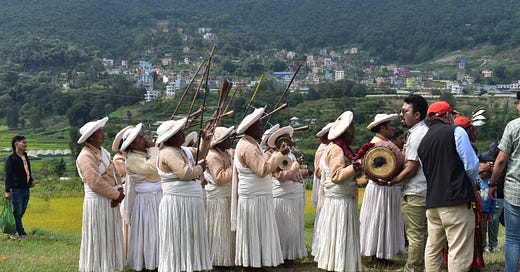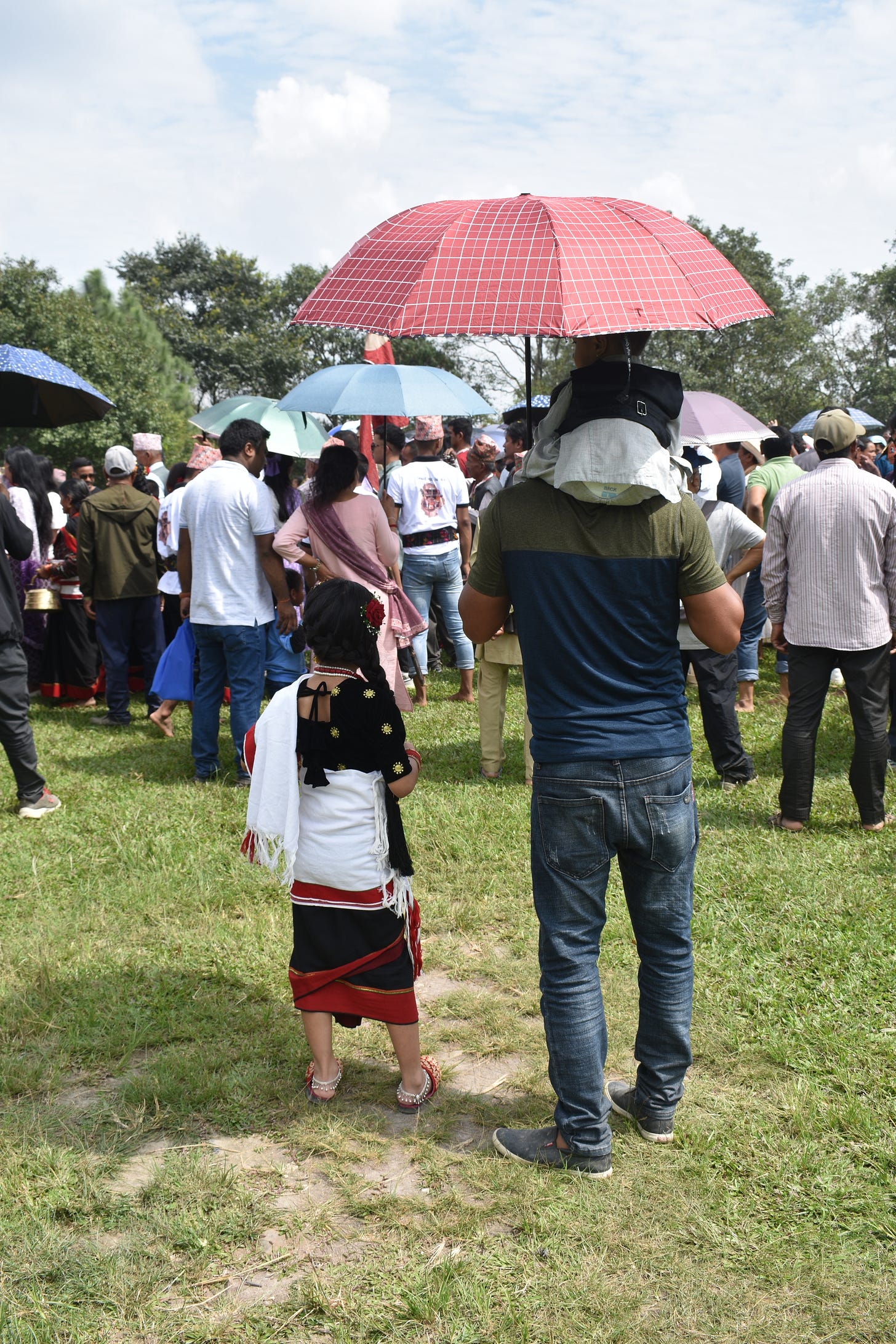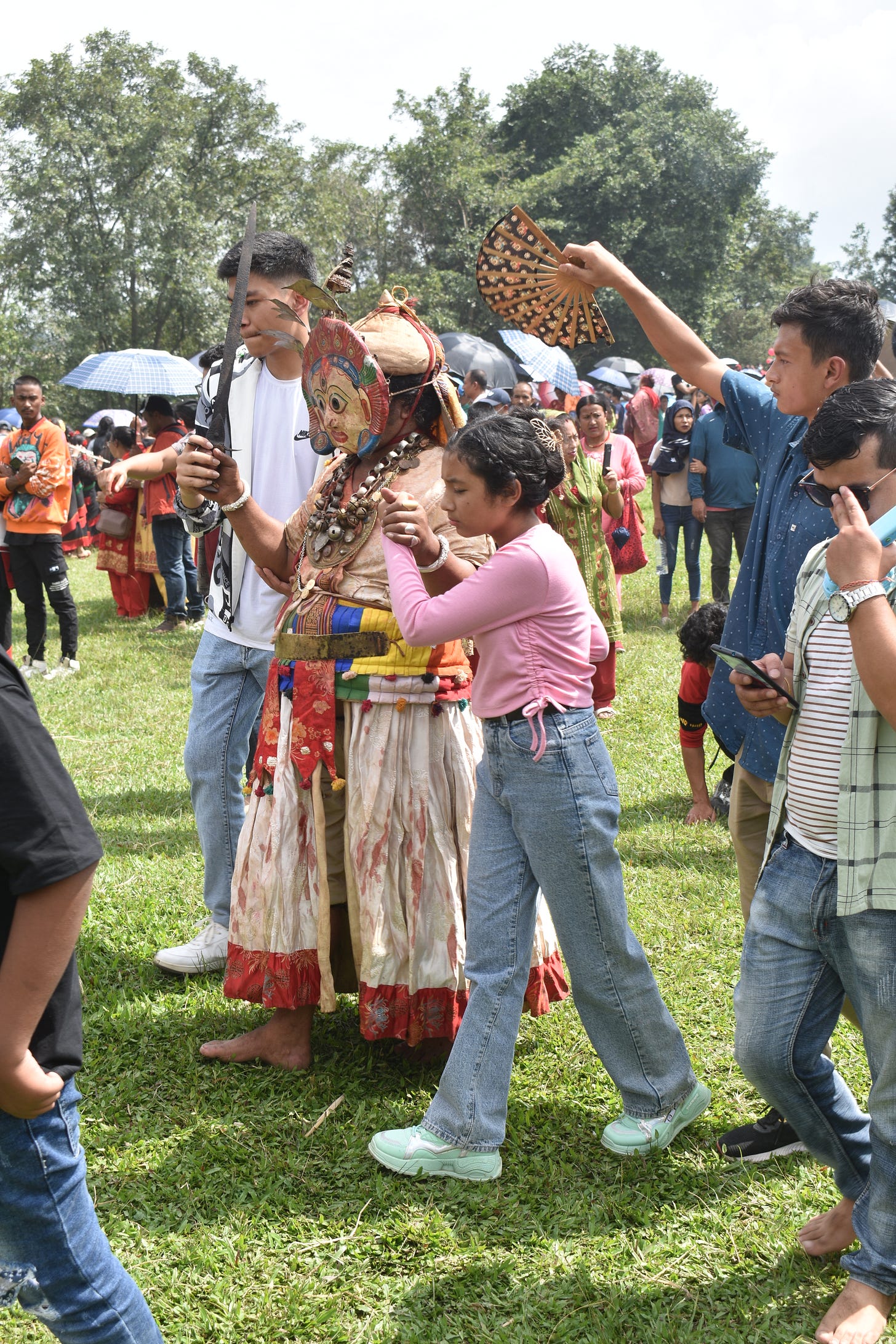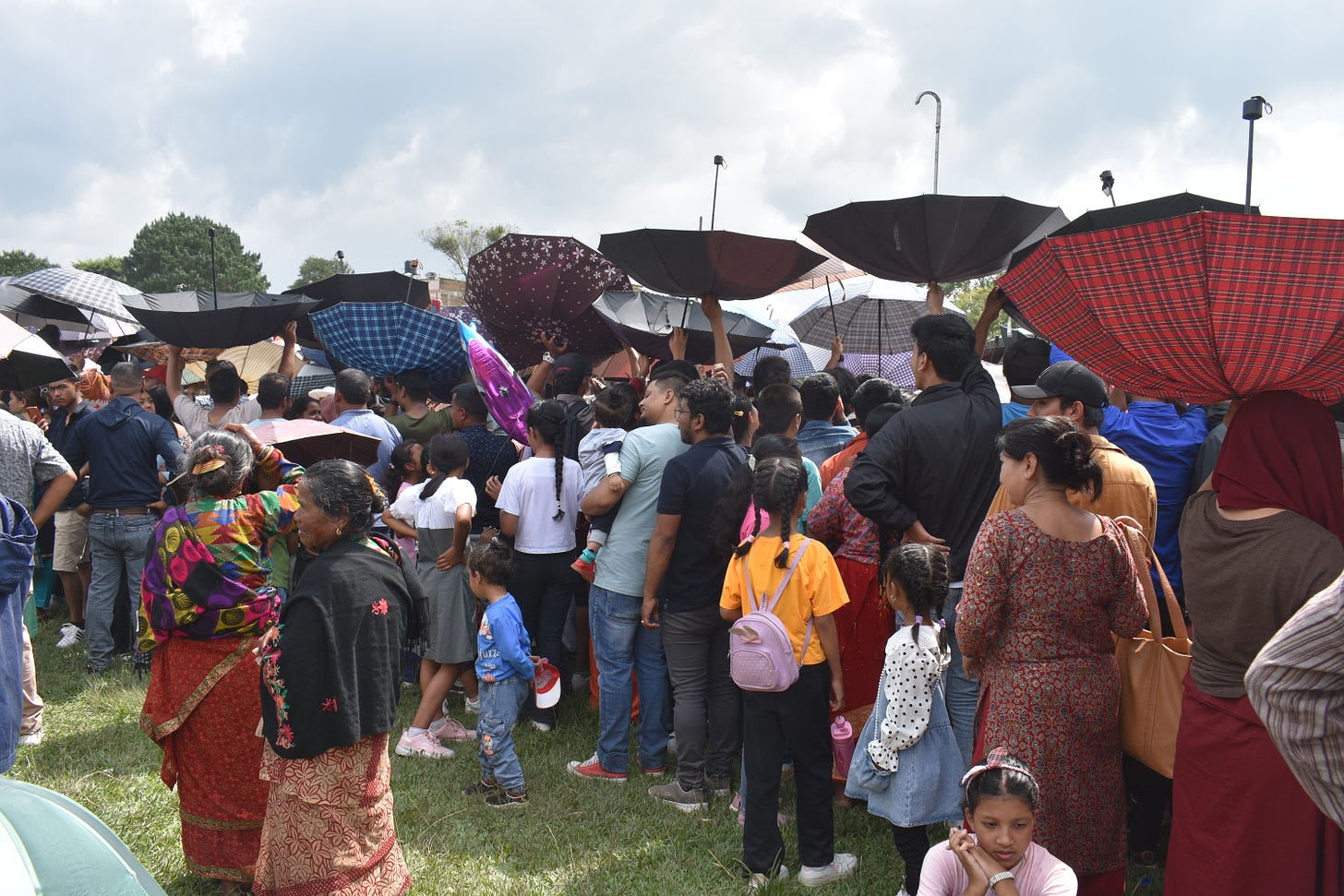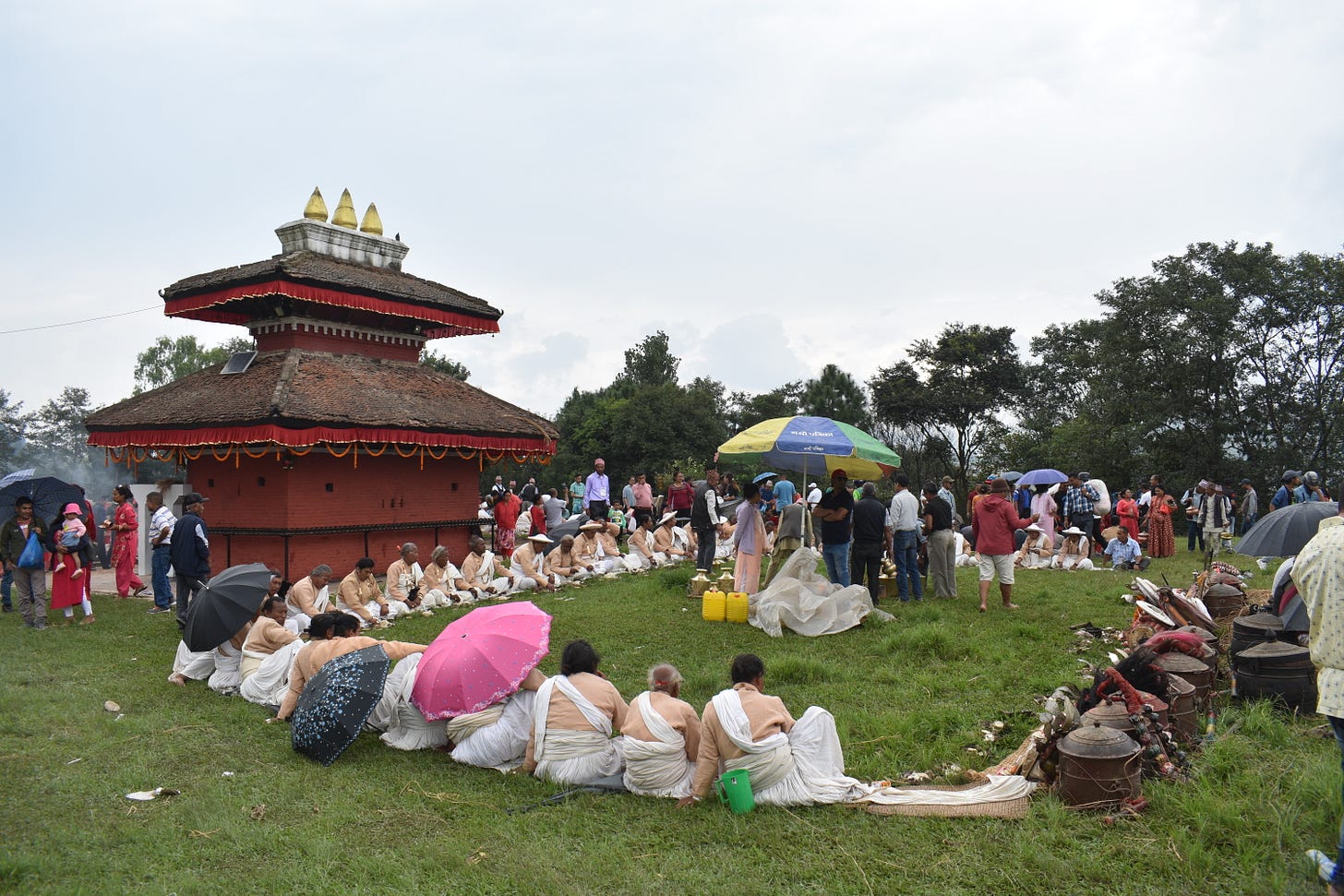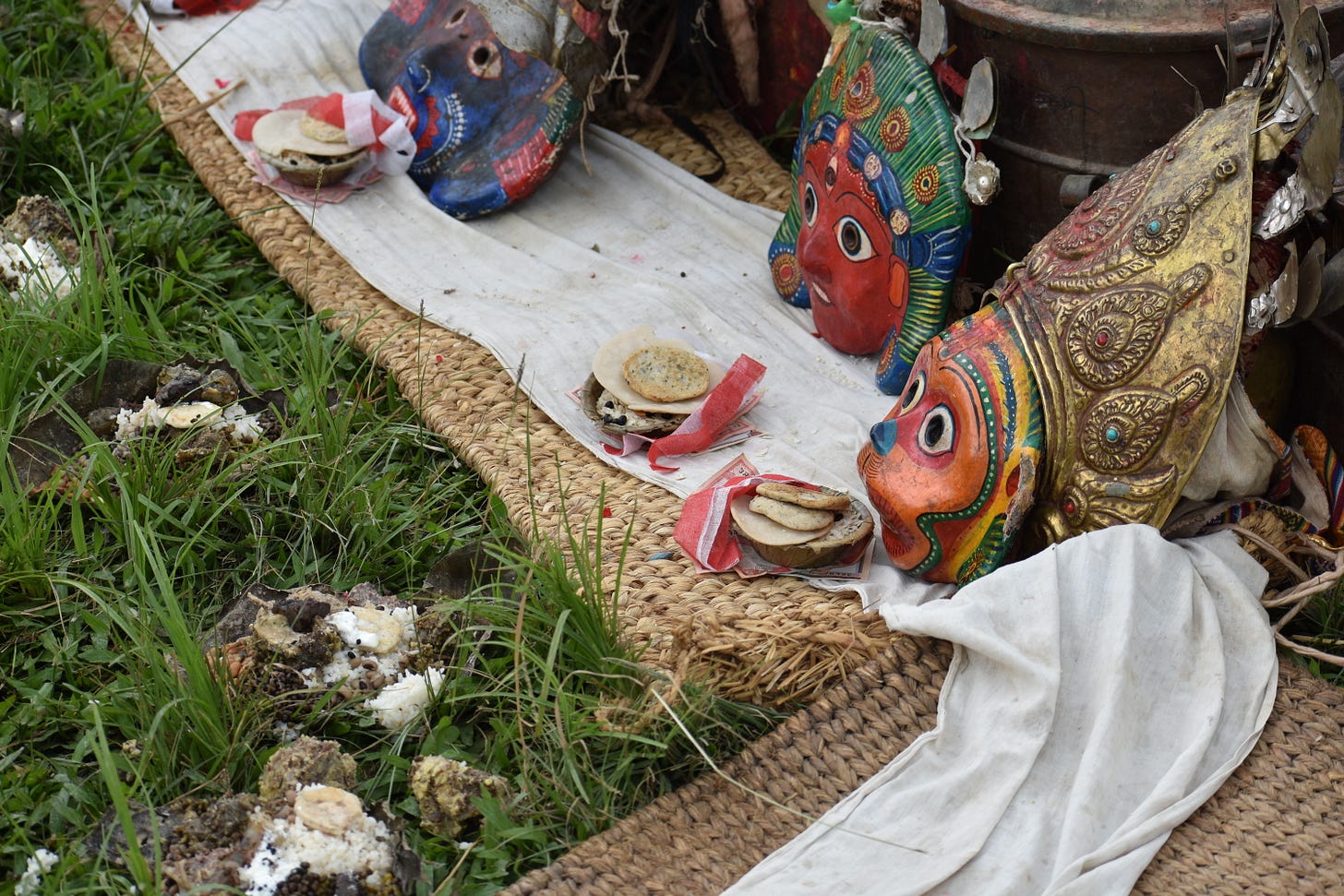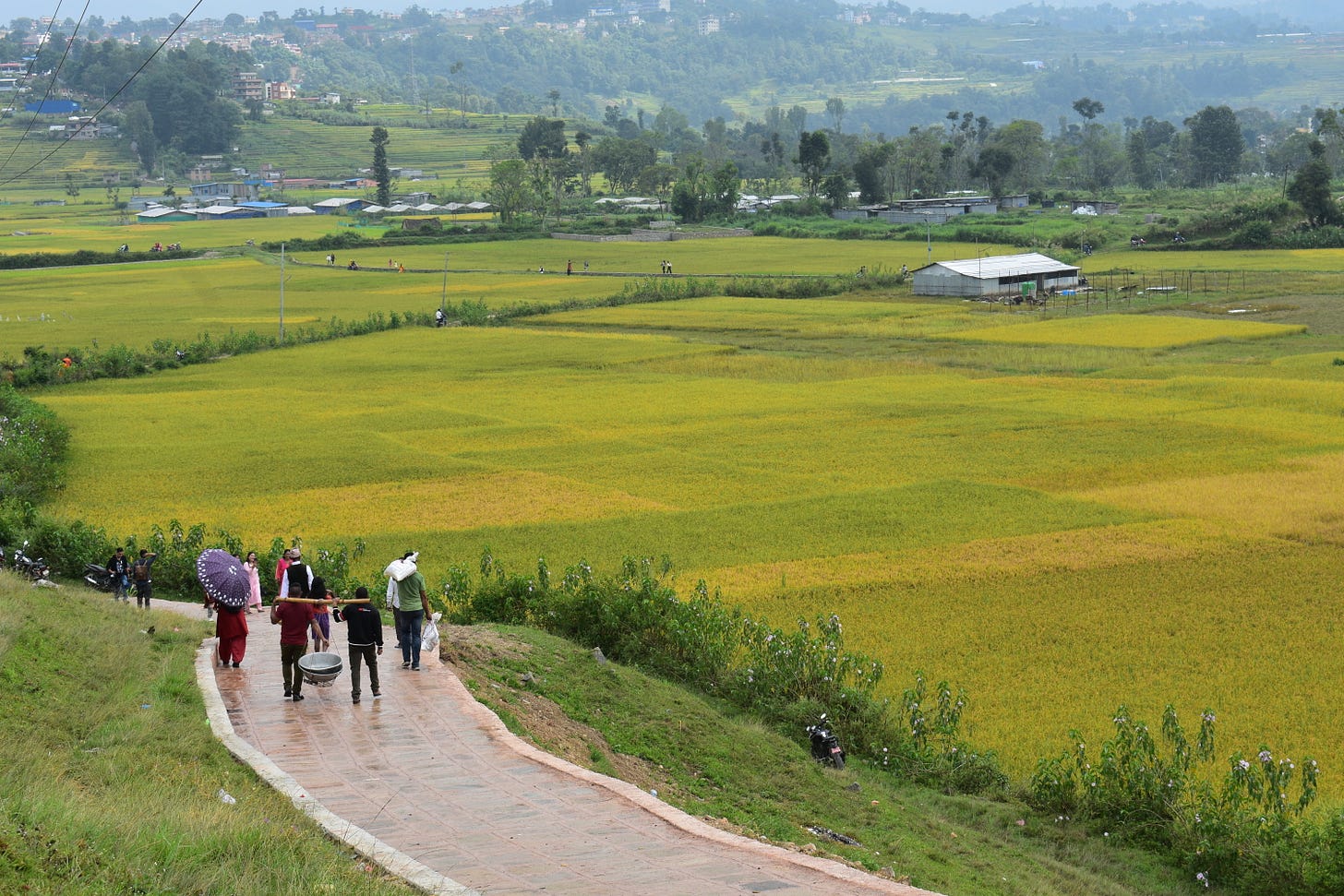Today is the main day of Dashain, the country’s biggest festival, and I made my way, as I have many other years on “tika day”, to a friend’s house for the closest thing to a Dashain ritual that I have. She’s one of four sisters (and a brother) and while some of them live abroad, they try to gather for these holidays if they can.
The day follows a simple pattern: an early lunch, five-rupee-ante card games with the children, one of whom has become taller than me since I last saw her, and a tika, or blessing, from the 90 year old family matriarch, whose face is beautifully wrinkled along smile lines. Seeing her again each year feels like the blessing in itself.
Like I said, this invitation has become a regular visit, but this holiday season I also experienced something entirely new, which had its genesis in October 2018, when I was at the magazine ECS Nepal, and one of our regular freelance writers emailed me to pitch a story idea:
“I went to Khokana village a couple of days back to witness an extra-ordinary festival known as the Shikali Jatra for the very first time. It's a festival celebrated only in Khokana village, where people don't celebrate Dashain.”
Of course I agreed: I’d never heard of this particular jatra before, and I knew I wasn’t alone. The story came out in the November issue, and has stayed at the back of my mind ever since. In the years since I kept missing the right day—and also, there was the not-so-small matter of a pandemic that limited gatherings.
This year, I was determined to go, and after several messages back and forth tentatively established what the main day of the festival might be: Saturday. (Or Sunday. Or maybe Monday. No one seemed completely sure.)
Friday I planned to meet up with friends and attend the opening of an art exhibition, and pulled out my faithful scooter, which I don’t drive as often since moving to this much more central apartment. It wouldn’t start, which isn’t uncommon—it’s 18 years old—and I pushed it to the nearby mechanic, expecting him to work his usual magic with a quick tinker and send me on my way.
A few minutes later the diagnosis was in: a vital part needed replacing, and what with the weekend and the big holiday after that, I’d left it too late.
I didn’t really need the scooter for Friday’s activities, but I wasn’t sure how I’d get to Khokana, outside the ringroad on the other side of town, on the following morning without it.
**
Saturday morning I woke up a little late, and as I was wondering whether and how to still go to the jatra: serendipity. I heard my downstairs neighbour leaving his house, and knowing that he is an avid photographer who attends every festival he can, I leaned over the railing and asked him where he was off to this time.
Five minutes later I’d thrown on clothes, grabbed my camera, and was heading across town on the back of his motorbike, crucially forgetting to take note of the weather.
**
Through the nearly empty city, across the bridge to Lalitpur, out of the ringroad on the south side, and finally to Khokana, a small Newari town famed for its mustard oil production. And also, apparently, a Hindu community that doesn’t celebrate the country’s biggest Hindu festival, but has their own unique one instead.
Between the village and the hilltop of the Shikali Temple is a sea of rice fields, all nearly ripe and yet the days or weeks between each section’s planting has created a patchwork of greens and yellows, with barely a building in sight. I learned later that this beauty has been preserved because of the local belief that this land is sacred: nothing can be built on it.
**
We arrived just as the festivities began in earnest. For the full details, you should really read Sambid’s informative article as I’d only be repeating him if I tried to tell you those; what I’m writing here are my thoughts and feelings as I experienced it.
I usually shy away from crowds and stayed mostly on the edges, but even when I ventured into this one, made up mostly of people from the immediate area, it didn’t have the press or the tension that large groups of people often do, but was open and fluid.
Dancers and musicians, some in ceremonial white and tan priestly garb, others wearing individual elaborate costumes and masks, moved around the hilltop in a rough circle with the crowd lining the way. The costumes they wore were often bulky and heavy, and the sun beat down hot. Younger people helped the aging performers, some by holding their heavy instruments for them or even supporting their arms, others fanning them with tools both traditional—a fan that could have been a hundred years old—and very modern—one of those miniature battery operated electric things.
Most of those performing in the procession were older, but there were a group of costumed young people with instruments, and this underlined one of the things that impressed me most about the day: how much children and young people were active in each part of the proceedings.
There were lots of umbrellas being used as sun shades, and at one point a man starting holding his upside down, still open. A few minutes later I found out why, when some of the priests began tossing handfuls of what seemed to be mostly cooked rice over the crowd. Hands, upturned umbrellas and motorbike helmets were stretched high in the air to catch some, “for good luck”, I was told. I could see people who’d caught some returning to their family groups to share it out amongst the children or older people who had been waiting on the sidelines.
Makeshift fairground games that seem to be the same the world over were being played by those not directly involved in the procession or watching it.
After it was over, seating groups formed on the grass, one made up of the priests, another of everyone else who wanted to partake, and a simple meal was served on leaf plates. On one side of the priests’ circle was the image of the temple’s deity, flanked by the line of masks worn earlier by the performers, each with a plate of their own in front of them.
The rain rolled in just as those of us in the regular circle were finishing our meal, and that group quickly dispersed, while umbrellas materialized over the priests again. The drop in temperature was a relief after all those hours in the sun: when I got home I discovered I’d sunburned not only my neck but my scalp. Note to self: bring a hat next time.
**
I don’t have the knowledge or expertise to even explain the things I saw (again, if you’re curious you can learn more in Sambid’s article here), and this procession was just one of several that day, which itself was only one part of a multi-day festival. I asked a few questions, but mostly I just experienced it.
The friend who’d given me a ride told me it was his second time attending this jatra; the previous year, he’d missed the beginning of the procession, which was why he’d come back. “But I think, somehow, I’ll be here next year, too.”
Honestly, I had planned on this being a one-time thing. But I found myself nodding along. I think I will, too.
**
Note: Here are a few of my favourite pictures that I took on Saturday:
